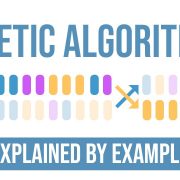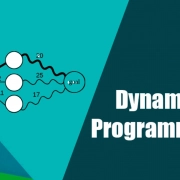Understanding the Role of the Root Node in Decision Trees
Decision trees are both simple and effective algorithms in machine learning. Whether you're predicting product sales or classifying a disease, decision trees provide a clear path. The most important part of these trees is root nodeThis term, "root node," is used in Turkish and is the point that initiates the entire decision-making process of the tree. In this article, we'll explore what the root node is, how it works, and why it's critical. I'll also share practical examples using Python and scikit-learn. If you're ready, let's get started!
What are Decision Trees?
Decision trees make decisions by separating data according to features. root nodeis the starting point of the tree and tests the first property. The following internal nodes performs additional tests, leaf nodes gives the final result (e.g., “Buys” or a price estimate). In Turkish, the terms “decision tree” and “root node” are well-established and accurate equivalents in the machine learning literature.
An example structure:
If Income <= 80,000 TL: ├── If Age <= 35: │ ├── Result: Won't Buy │ └── Result: Won't Buy └── If Credit Score >= 700: ├── Result: Won't Buy └── Result: Won't Buy
Here, the root node (e.g., “Income <= 80,000 TL”) is the point that first separates the data.
Root Node: Gateway of Decisions
The root node is at the top of the decision tree and is the feature that first divides the entire data set. Its goal is to select the feature that best separates the data with respect to the target variable. This selection is usually purity This is done to increase the reliability. In Turkish, “purity” refers to how similar the data in a node is.
The root node selects the best feature by the following criteria:
- Gini Purity: Measures the probability of a data point being misclassified. A lower Gini means better separation. "Gini purity" is a common term in Turkish.
- Entropy: Measures the irregularity in data. A feature that reduces entropy provides more information. The Turkish word "entropy" is also standard in technical literature.
For example, in a credit approval system, the root node might select the "income" attribute and separate the data with a threshold of "Income > 100,000 TL." I once selected "cart amount" as the root node in an e-commerce project, and this made customer segmentation incredibly easy!
The Importance of the Root Node
The root node shapes the entire structure of the tree. Here's why:
- First SeparationThe root node forms the basis of the tree by selecting the feature that best separates the data. A good root node increases the accuracy of subsequent branches.
- Feature ImportanceThe feature selected as the root node is often the most important feature. For example, in a healthcare project, selecting "blood sugar" as the root node significantly increased diagnostic accuracy.
- IntelligibilityThe root node describes the beginning of the decision process. For example, a statement like "This customer didn't buy because their income was low" is very valuable in the business world.
Practical Example: Root Node with Iris Dataset
Let's see how root node works with scikit-learn in Python. Let's do a classification example using the Iris dataset:
from sklearn.datasets import load_iris from sklearn.tree import DecisionTreeClassifier from sklearn.tree import export_text # Load the iris dataset iris = load_iris() X, y = iris.data, iris.target # Create the decision tree classifier clf = DecisionTreeClassifier(random_state=42) clf.fit(X, y) # Print the tree structure agac_kurallari = export_text(clf, feature_names=iris.feature_names) print(agac_kurallari)
This code classifies Iris flower species. In the output, you'll see which attribute (e.g., "Petal length <= 2.5 cm") the root node selects and how it separates the data. In one project, I quickly classified customer behavior using the root node, and the results were very clear!
Regression Example: Home Price Prediction
Now, let's do a regression example with the California Housing dataset:
from sklearn.datasets import fetch_california_housing from sklearn.tree import DecisionTreeRegressor from sklearn.tree import export_text # Load the California Housing dataset data = fetch_california_housing() X, y = data.data, data.target # Create the decision tree regressor regressor = DecisionTreeRegressor(random_state=42) regressor.fit(X, y) # Print the tree structure agac_kurallari = export_text(regressor, feature_names=data.feature_names) print(agac_kurallari)
Here, the root node (e.g., “House age <= 30”) is the first point that separates the data. The attribute chosen by the root node directly affects the accuracy of the price predictions.
Root Node and Tree Performance
The root node determines the performance of the tree:
- The Right StartA good root node makes the rest of the tree more efficient. For example, when I chose the wrong root node in a price prediction model, my predictions started to deviate. Choosing the right feature made all the difference!
- Purity IncreaseThe root node minimizes Gini or entropy, making the data as pure as possible. This increases the accuracy of the tree.
Result: Root Node Power
The root node is the cornerstone of decision trees. It selects the feature that first distinguishes the data, shapes the tree's structure, and determines the accuracy of predictions. Whether you're analyzing a customer or diagnosing a disease, understanding the role of the root node makes a difference in your machine learning projects.
What projects have you worked on with decision trees? Do you have an interesting experience with the root node? Share it in the comments, let's discuss it together! For more machine learning tips, check out my blog or contact me!
Notes
- Turkish Equivalents of Terms:
- Decision tree (decision tree): A well-established, correct and common term in Turkish.
- Root node (root node): A standard and correct equivalent in machine learning literature.
- Internal node (internal node): A common and correct term.
- Leaf node (leaf node): The alternative “end node” can also be used, but “leaf node” is more common.
- Gini purity (Gini impurity): True and common in the technical literature.
- Entropy (entropy): A standard term in machine learning.







